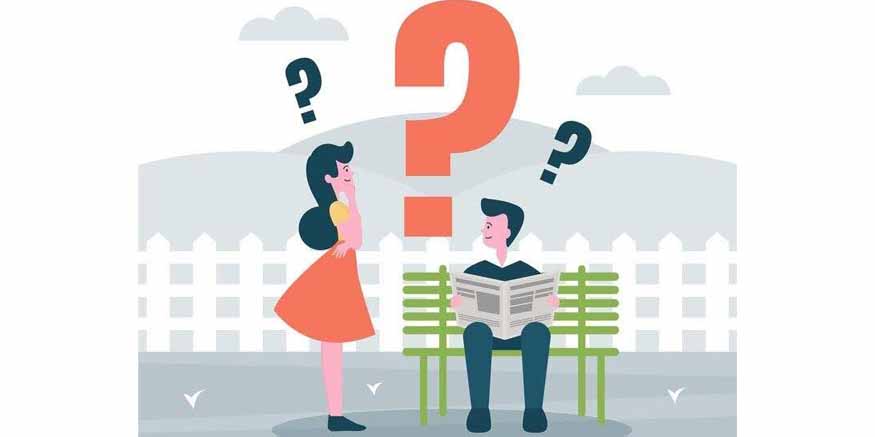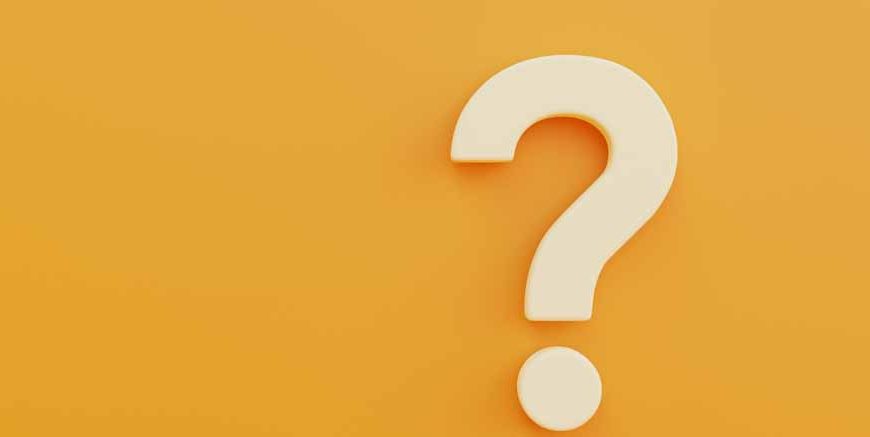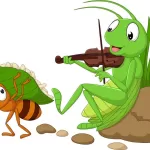The symbol (?) is an effective punctuation mark which is used for our uncertainty or when we ask a question. This is indeed one of those little symbols that can still be quite problematic, which is why it is a good idea to study this little thing closer and learn how to properly type it.
Despite its small size, the question mark plays a crucial role in written communication. They are quite useful for expressing the tone and the basic attitude of the writer or speaker and even reverse the meaning of a given statement. For example, between “You’re coming to the party.” and “You’re coming to the party?” There is a big difference. The first one is affirmative while the second one is either a question, or an expression of a doubt.
To sum up, mastering peculiarities of using the question mark can help you develop your writing skills as well as guarantee the clear comprehensibility of the intended meaning. It is not simply that it has a versus-like function simply placed at the end of a sentence; there are rules about usage in quoted speech and with other punctuation marks. Moreover, in our digital age, the question mark has taken on new roles in informal communication, sometimes being used multiple times for emphasis or combined with other symbols to create emoticons. Understanding these various uses can help you navigate both formal and informal writing situations more effectively.
Table of Content:
- About Question Mark
- Uses of Question Mark
- Question Mark Sentences Examples
- Question Mark Rules
- What Does Double Question Mark Mean
- References
About Question Mark:
The symbol ?? is formed by a curvy line and a dot line below is used at the end of sentences that inquire about something. It is a mark that can make readers think that the writer is pointing at the answer here. This little sign can alter the meaning of a whole slew of words and make a statement into a question.
For Example:
Statement: You like ice cream.
Question: You like ice cream?
See how adding a question mark changes things? It’s pretty powerful for such a small symbol!
Uses of Question Mark:
Question marks have several important jobs:
To end direct questions:
“What is your favorite color?”
“What is your age?”
To show uncertainty:
“The movie starts at 7:00? (I’m not sure)”
In titles of books, movies, or songs that are questions:
“Are You There, God? It’s Me, Margaret”
To express doubt or disbelief:
“He said he can eat 10 pizzas in one sitting? No way!”
Question Mark Sentences Examples:
Let’s look at some fun examples of how we use question marks:
- “Why is the sky blue?”
- “Can penguins fly?”
- “Where did I put my shoes?”
- “Do you want to build a snowman?”
- “How many stars are there in the sky?”
These sentences all request information/clarification and are therefore followed by a question mark.
Question Mark Rules:

To use question marks correctly, remember these simple rules:
Use a question mark at the end of a direct question:
“What is the time now?”
Don’t use a question mark for indirect questions:
Incorrect: She asked me what time it was?
Correct: She asked me what time it was.
For a question within a larger sentence, use a question mark inside the quotation marks:
Dad asked, “Have you completed your homework?”
Capitalize the first word after a question mark when it starts a new sentence:
“What’s that noise? It sounds like thunder.”
Don’t use a period with a question mark:
Incorrect: “Where are we going?.”
Correct: “Where are we going?”
What Does Double Question Mark Mean:
Sometimes, you might see two question marks together (??). This isn’t a standard punctuation rule, but it’s often used in informal writing to show extra confusion, surprise, or disbelief:
“You ate an entire cake by yourself??”
It’s like saying, “Wow, I really can’t believe this!” or “I’m super confused!” It must be noted that all quotation marks, specifically double question marks, are mainly associated with informal writing such as texts and posts on social media.
Learning proper usage of the question marks will assist you in writing in proper English, as well as to express your interest in the events happening around. So do not be scared to go and ask questions, that is how we are able to learn and transform ourselves.

Questioning is a natural constituent of people’s everyday life and certainly an essential stage in learning. The process of asking the right questions is the essence of gaining new knowledge, as well as the means of initiating a discussion and examining the possibilities of change. As stated above the question mark as the symbol of inquiry plays an important role in the process and indicates the learner’s intention.
Questions are very effective in written and verbal communication and effective adept use of questions would definitely boost your interpersonal communication. It illustrates empathy due to the qualities involving paying attention to the other person and passively, acknowledging the concern for the perceptions held by the other individual. However, another effective tool to include in many aspects of life is the practicing of good questions as a form of art.
This way, by becoming a friend to the question mark and the questions it implies, one is able to acquire a plethora of knowledge and constantly develop as an individual. And yes, the wording of some questions may look idiotic, but if it helps to broaden the view and to learn something new – it is not an idiotic question at all. Therefore, tap into your sense of curiosity, work on your ability to form crisp and coherent questions, and do not shy away from clicking on that little curved symbol to open up opportunities to learn more in the everyday hustle.
Now it is your turn, come up with some questions of your own, ending them with a question mark!
For more such interesting blogs, Visit EuroKids
References:
- https://prowritingaid.com/Question-Mark#:~:text=A%20question%20mark%20indicates%20to,a%20sentence%20is%20a%20question.
- https://www.grammarly.com/blog/question-mark/
- https://study.com/academy/lesson/question-mark-definition-use-quiz.html
- https://academicguides.waldenu.edu/writingcenter/punctuation/questionmarks
















